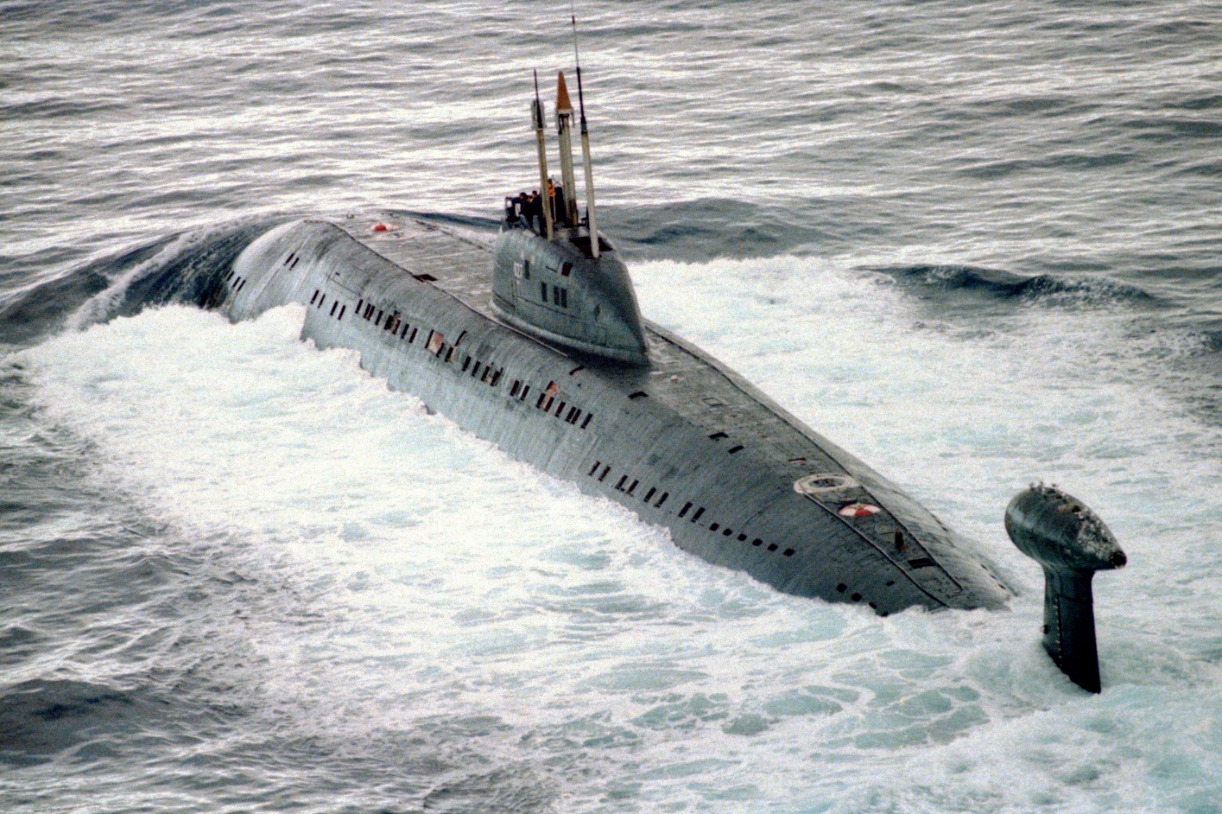
July 14, 2024
In 2009, the UK's HMS Vanguard and France's Le Triomphant, both nuclear-armed submarines, collided deep under the Atlantic Ocean. The collision caused visible damage to the Vanguard, but no radioactivity was released, and no injuries were reported.
by Maya Carlin
Summary and Key Points:
In 2009, the UK's HMS Vanguard and France's Le Triomphant, both nuclear-armed submarines, collided deep under the Atlantic Ocean. The collision caused visible damage to the Vanguard, but no radioactivity was released, and no injuries were reported.

-Despite agreements among NATO allies to share the general locations of submarines, ballistic-missile submarines are excluded. This incident highlighted the ongoing risks of submarine collisions, as similar accidents occurred during the Cold War.
-While some analysts suggest increased data sharing to prevent future collisions, others emphasize the importance of maintaining secrecy around nuclear-armed vessels.
While many have heard of submarines crashing to the bottom of the ocean floor or colliding with underwater mountains, it is harder to imagine that sometimes a ship’s greatest danger is simply another ship.
In 2009, two nuclear-armed submarines from France and the United Kingdom collided deep under the Atlantic Ocean. While no radioactivity was released, both ships were damaged when the Royal Navy’s HMS Vanguard struck France’s Trident-class Le Triomphant submarine. No crew members or injuries were reported by either country.
An Overview of the Incident
When the HMS Vanguard returned to its base in Scotland days later, it had visible damage on its starboard side and near its missile compartment. A whistleblower who served in the UK’s nuclear submarine program later claimed that, “The French submarine had took a massive chunk out of the front of HMS Vanguard and grazed down the side of the boat. The High Pressured Air (HPA) bottle groups were hanging off and banging against the pressure hull. They had to return to base port slowly, because if one of HPA bottle groups exploded it would've created a chain reaction and sent the submarine plummeting to the bottom.”
Perhaps the British government was minimizing the damage inflicted on the submarine in an effort to quell public concern over the potential dangers of nuclear leaks.
This freak accident was especially alarming since nuclear reactors power the ships, and both countries’ vessels routinely carry nuclear warheads onboard. Although “waterspace management” agreements among NATO allies direct member-states to advise one another of the general locations of submerged submarines, ballistic-missile-carrying ships are not included in the arrangement.

France’s Le Triomphant submarine could carry sixteen M45 ballistic missiles, and the Vanguard could carry the same number of Trident II missiles. Additionally, each submarine could carry 4 and 6 nuclear warheads, respectively.
The Triomphant-Vanguard incident did not mark the first time two submarines collided. During the Cold War, Western and Soviet ships collided on several occasions, according to The New York Times. In 1992, the American-made Baton Rouge nuclear submarine was struck by a surfacing Russian sub in the Barents Sea. Only one year after this mishap, the Russian K-407 collided with the USS Grayling. Decades earlier, in the mid-1970s, the U.S. Navy’s USS James Madison collided with a Soviet Victor-class attack submarine roughly 30 miles off the coast of Glasgow, near Holy Loch.

While some analysts argue that allies should share more data to mitigate the risks of future collisions, others argue that maintaining secrecy around nuclear-armed submarines is of the utmost importance. As Lee Willet of the Royal United Services Institute in London once put it, these vessels are the “strategic crown jewels” of any nation, and relaying such sensitive intelligence even to allies would be risky.
About the Maya Carlin
Maya Carlin, National Security Writer with The National Interest, is an analyst with the Center for Security Policy and a former Anna Sobol Levy Fellow at IDC Herzliya in Israel. She has by-lines in many publications, including The National Interest, Jerusalem Post, and Times of Israel. You can follow her on Twitter: @MayaCarlin
All images are Creative Commons.
No comments:
Post a Comment